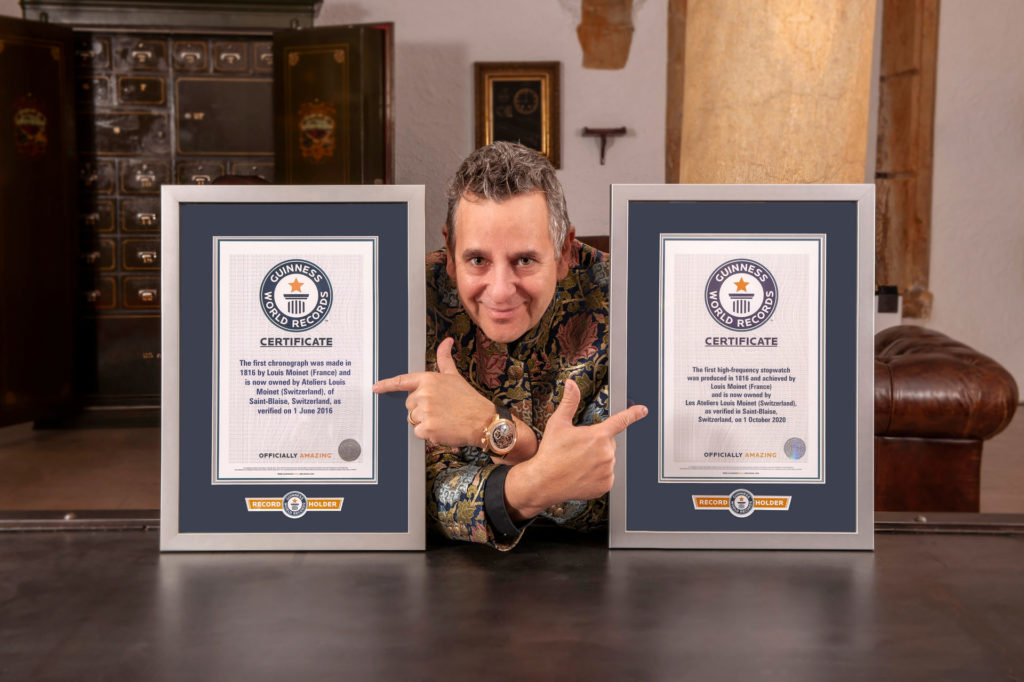Three world records
The great legacy of Louis Moinet continues its trailblazing path with three world records celebrating both his pioneering innovations and the contemporary creations that carry his name.
As the inventor of the world’s first chronograph in 1816, Louis Moinet has been officially awarded two world records for his Compteur de tierces, as the “World’s First Chronograph” and the “First High-Frequency Stopwatch“. These titles confirm his status as a pioneer in modern watchmaking.

World’s First
Chronograph
Louis Moinet awarded for the «World’s First Chronograph»
After the best part of six months of procedures and thorough investigations, Louis Moinet is [...]

First High-Frequency
Stopwatch
In 2023, with their extraordinary COSMOPOLIS timepiece, Les Ateliers Louis Moinet obtained a third world record for the “Most Meteorite Inserts in a Watch“. This latest achievement once again highlights the rebirth of one of history’s greatest watchmakers, whose legacy continues to shape the future of horology.









